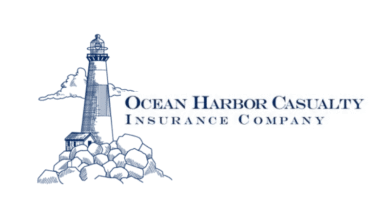Ocean Ledger sees potential for long-term cat bonds for coastal risks: CEO Roepers

Paige Roepers, CEO and Co-Founder of Ocean Ledger recently discussed with Artemis how the company’s high-resolution geospatial analytics can help the insurance-linked securities (ILS) market identify long-term catastrophe bond opportunities to cover coastal risks.
The company recently raised $900K in pre-seed funding, led by Ananda Impact Ventures and Silverstrand Capital, and plans to use the funds to expand its coastal risk management solutions and explore opportunities within the global insurance market.
Earlier this week, Lloyd’s Lab announced that Ocean Ledger will be joining its 14th Cohort, starting next month. Participation in the Lloyd’s Lab is expected to help accelerate Ocean Ledger’s product development while providing mentorship to strengthen its position in the insurance market.
It’s important to highlight that Ocean Ledger is currently working to integrate its technology across the risk cycle, from underwriting to loss adjustment and risk advisory, with a focus on the potential for long-term catastrophe bonds.
Moreover, Ocean Ledger has recently developed a geospatial tech stack that can rapidly and scalably assess multi-decadal historical anomalies in erosion and ecosystem extent in order to predict coastal risks, such as flooding, while also targeting and analyzing the deployment of adaptation interventions – from nature-based to engineered.
According to the firm, the tool integrates state-of-the-art earth observation, artificial intelligence (AI) site-level insight and biophysical modeling to generate a holistic view of coastal physical resilience across space and time and enable accurate predictions.
Roepers recently spoke to Artemis about the opportunity that the company sees for long-term catastrophe bonds and what risks they envisage being covered, through the use of its forecasting tool.
“The opportunity is providing very accurate parameter sets to the designers of ILS and Cat Bond products that are dynamic and calibrated for the area of interest,” Roepers said.
“By using Ocean Ledger’s precision satellite analytics and coastal risk modelling tool, an ILS provider can offer more accurate and targeted Nat Cat Bonds, with better risk mitigation and financial protection for policyholders who are facing coastal and climate-related threats,” she added.
Roepers went on to explain that Ocean Ledger’s forecasting capabilities focus on several core perils that are critical for risk assessment in the ILS market.
These include: coastal erosion, which is a growing threat to ports, real estate, and infrastructure, is quantified to provide insights into potential financial losses covered by nat cat bonds.
Flood damage also remains a key concern, as Roepers explains that Ocean Ledger’s data indicates that 78% of potential losses from coastal infrastructure stem from flooding, the issue is accounting for the local factors that influence where and how bad flood-risk will be. This is a huge opportunity for insurers.
“Ocean Ledger provides insights into localized geomorphic and environmental factors, allowing for specific risk assessment related to underwater topography, natural defences, and shoreline movement. These factors may not seem like an acute problem for lending & insurance, but take for example, the combination of a shallow seabed, high erosion rates and degrading natural defenses – that can very quickly result in serious inundation in a particular area when a storm hits,” Roepers said.
Adding: “With climate change influencing weather patterns and sea levels, Ocean Ledger’s ability to model climate scenarios allows a Nat Cat Bond to cover risks associated with climate-induced coastal changes.”
As extreme weather events become more frequent, Roepers also explained that Ocean Ledger’s system assesses the impact of hurricanes, typhoons, and storm surges, enabling insurers to better anticipate and manage storm-related losses.
She also notes that the organisation monitors the efficacy of adaptation interventions like seawalls & nature based solutions, adding that a catastrophe bond could cover risks if these interventions fail to protect the insured assets adequately.
Furthermore, Roepers also explains how effective the company’s data and analytics can be towards the catastrophe bond market.
“Ocean Ledger data can enhance risk assessment, enabling data-driven triggers, allowing bespoke data for investment structures, improving investor confidence, and linking financing to engineered resilience initiatives,” Roepers said.
“By using the geospatial insight provided by Ocean Ledger, issuers can design bespoke bonds that not only address current risks but also contribute to future sustainability and resilience efforts, making them attractive to a wide range of investors.”
Roepers noted that there are a number of technical gaps and limitations in coastal mapping and monitoring that are “holding back innovation” within the nat cat bond process.
These include: high costs, such as field team labour, drone data acquisition and sampling tools, as well as low accuracy and depth limit for remote sensing, along with there being an overall lack of transparency and scalability within the market.
Another notable limitation that Roepers highlights, is that the current global or national datasets or models used have major gaps and lack the accuracy or project-specific insight needed for private sector investment, decision-making and continuous monitoring.
“Direct field observations, while crucial, are alone not time or cost-effective and lack spatial and temporal insight needed for decision-making and impact analyses,” Roepers added.
In terms of why ILS investors should be taking an interest in Ocean Ledger’s initiative, Roepers stated that investors and banks already have a “vested” interest in sea level rise and acute erosion risk due to their direct impact on ILS investments.
“By understanding how coastal dynamics influences sea level rise impact to insurance landscape, investors can make informed decisions that not only manage risk but also capitalize on emerging opportunities in a changing climate,” Roepers explained.
Adding: “Ocean Ledger delivers a level of detail that enables insurers and lenders to go beyond the black box of current catastrophe models and assess the appropriate coverage for each defined peril.
“Ocean Ledger can also Measure, Validate and Report, on vegetation metrics and embedded C02 sequestration which gives a yield and profit margin over and above the pure peril definition.”
Lastly, Roepers explained how this type of longer-term risk transfer could ultimately benefit risk holders, such as insurers, reinsurers, mortgage lenders and governments.
“Longer-term risk transfer mechanisms, such as those facilitated by Ocean Ledger-enabled Nat Cat bonds, offer various benefits to risk holders.
“These include improved financial stability, enhanced risk management, increased access to capital, encouragement of proactive measures, and strengthening community resilience.
“Insurers, reinsurers, mortgage lenders and governments can better prepare for and respond to natural disasters, ultimately safeguarding their financial health while allowing sustainable development.”
“The Ocean Ledger platform significantly influences Insurance-Linked Securities (ILS) investment decisions by enhancing data transparency, improving risk modelling and continuous monitoring,” Roepers concluded.
The catastrophe bond market has often discussed the potential to address longer-term, perhaps slower-onset risks of this kind, with one of the great needs seen being improved and more granular risk analytics.



